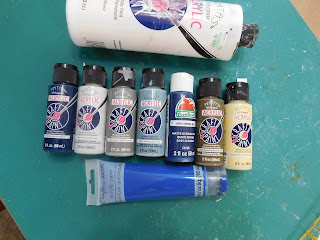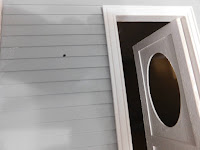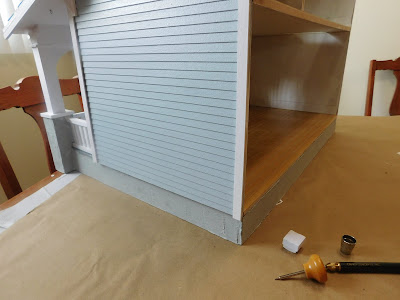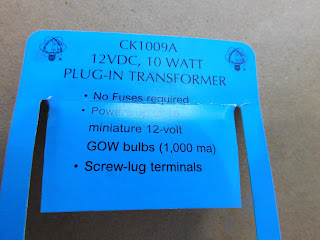This week I decided to create some faux vinyl flooring to use later in the bathroom of our project house. I have made and used this type of floor previously in different projects but I don't think I have shown you how I make it. I first came up with this back when I was working on my big dollhouse (the Harrison) that I used to have. I knew I wanted a floor in the kitchen of that house that looked like the sheet vinyl that is in so many homes. Back then I was still homeschooling my son and I had a good sized chunk of bright blue poster board from the dollar store left over from one of his projects. I thought I would play around with it, never imagining I would be able to use it with that bright blue base. Long story short I did end up loving it and used it in that house. You couldn't even tell the bright blue was under the other paint since I went a lot heavier with that one.
This time I wanted the same type of flooring but I was after a much lighter and brighter look.
I love that this project is done using craft paint, a simple applicator (or several) and some plain poster board. All of these are things I almost always have on hand and if I don't have them they are easy and cheap to find.
My first step for this process is to really look at whatever I am using for inspiration in the room. In both this case and in the floor for the Harrison that inspiration was the wallpaper I would be using. For other rooms I have used fabric that will be in the room or even a piece of wall art from the room. Now really look at your inspiration piece and see what colors are in there. You might be surprised at what you find when you really look.
You might end up with a lot of colors and this might be fine or you might want to pick and choose among the colors. I am very happy with the colors I ended up using. I did have a couple of teal colors pulled in the beginning but as much as I really wanted to include them they just didn't work with the look I was going for.
Now look around and see what you have to use as an applicator for your paint. I pulled several items that I felt might work.
Now the fun begins. Take an extra sheet of your poster board, or just part of a sheet. And just play with your paints and whatever tools you have picked.
If I would have had a natural sponge on hand I think that would have been another good choice.
For a palette I just grabbed a lid from a container of dishwasher pods. I love to save the containers and lids things like this come in because I can re-use them for crafting in so many ways.
You want to work in layers of colors to avoid them from all combining and turning into a muddy mess. I wanted some blending but not a lot. I chose to use the plain cotton ball for my first layer and all the colors. Then I followed up with just a few colors and the kitchen sponge.
You might want to use a lot more layers or just a few. That is part of the fun of this project. You can make it the way you want it.
I followed up with a coat of Mod Podge in satin. This not only seals the flooring but it gives it that slight sheen that a real floor would have.
Another step that would be fun on this would be once the Mod Podge is dry take a paint pen and draw “grout” lines every 1” or so both ways. I thought about it but I ended up accidentally getting the bathroom wall in crooked so I don't want to emphasize that fact so I am leaving the lines off.
As always I do want to sincerely thank all of you for watching my videos and reading my blog posts. It means so much to me that you are supporting me in this way. If I could ask you all to do just a bit more by subscribing to the channel and liking the videos and leaving comments. Those help more than you can imagine. Also if you could pass the links on to your friends I would appreciate it so much.















































